Dana Widawski
Arts & Morris
Installation Views
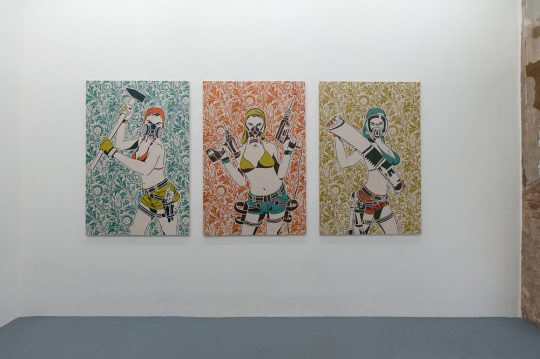
Installation view: Dana Widawski at Galerie Gilla Loercher 2012
Photo: Dieter Düvelmeyer, courtesy Galerie Gilla Loercher
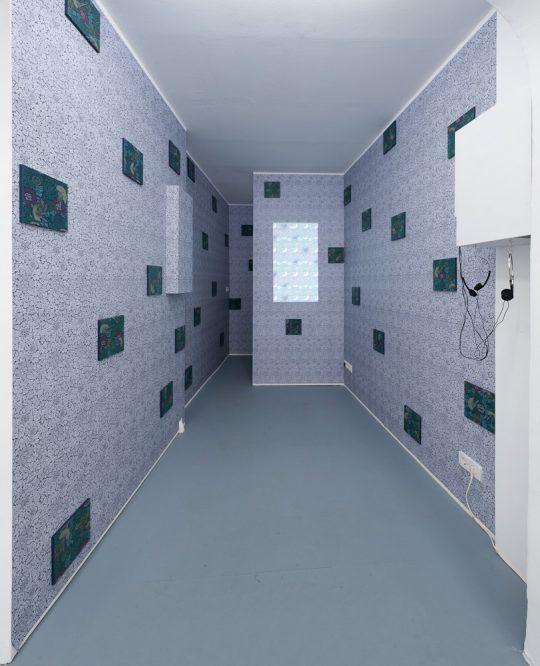
Installation view: Dana Widawski at Galerie Gilla Loercher 2012
Photo: Dieter Düvelmeyer, courtesy Galerie Gilla Loercher
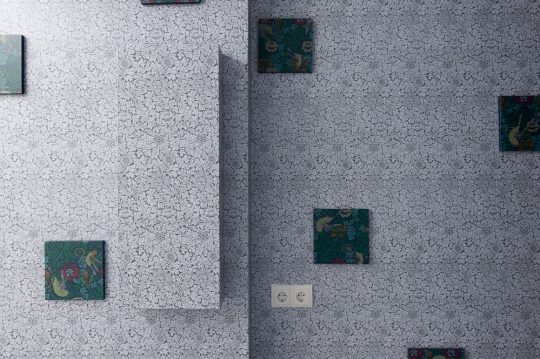
Installation view: Dana Widawski at Galerie Gilla Loercher 2012
Photo: Dieter Düvelmeyer, courtesy Galerie Gilla Loercher
Works
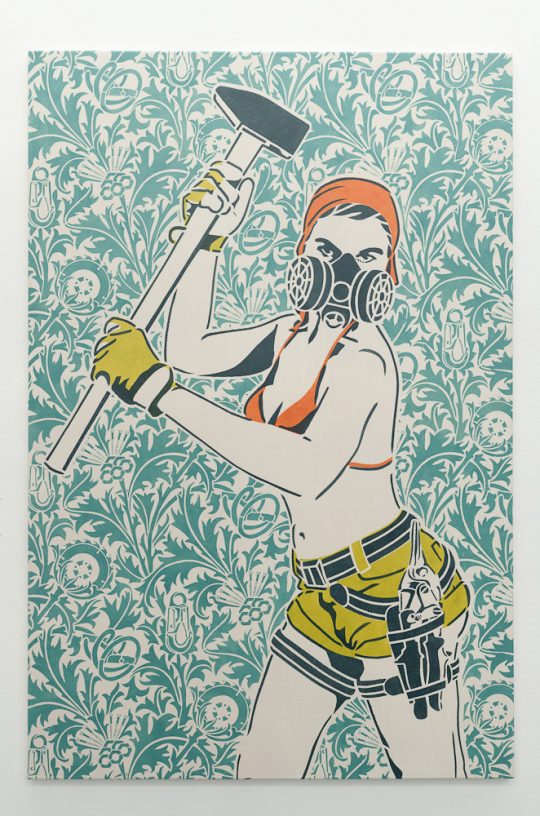
Arts & Crafts I, II, III (triptych), 2012
Stencil printing, acrylic on cotton nettle,
stretcher frame 100 x 150 cm
Background: Revision of a design by William Morris - Thistle 19th century
Unique edition 1/3
Photo: Dieter Düvelmeyer, courtesy Galerie Gilla Loercher
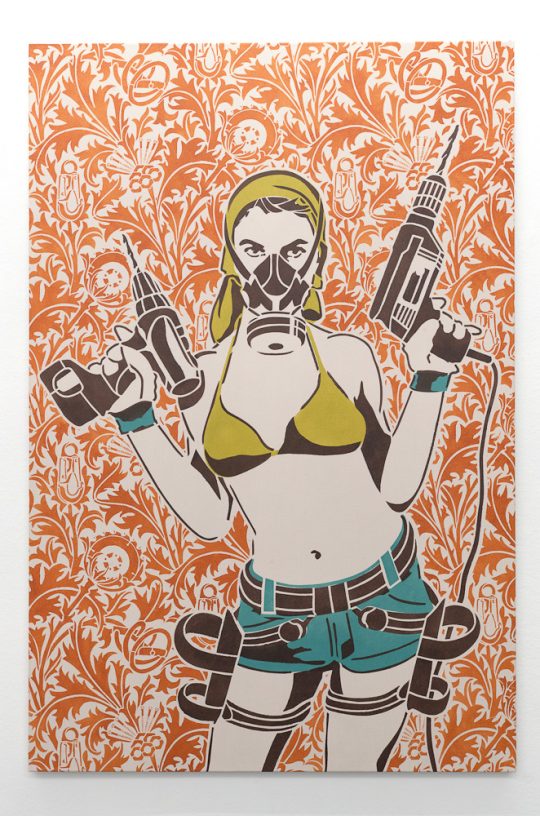
Arts & Crafts I, II, III (triptych), 2012
Stencil printing, acrylic on cotton nettle,
stretcher frame 100 x 150 cm
Background: Revision of a design by William Morris - Thistle 19th century
Unique edition 1/3
Photo: Dieter Düvelmeyer, courtesy Galerie Gilla Loercher
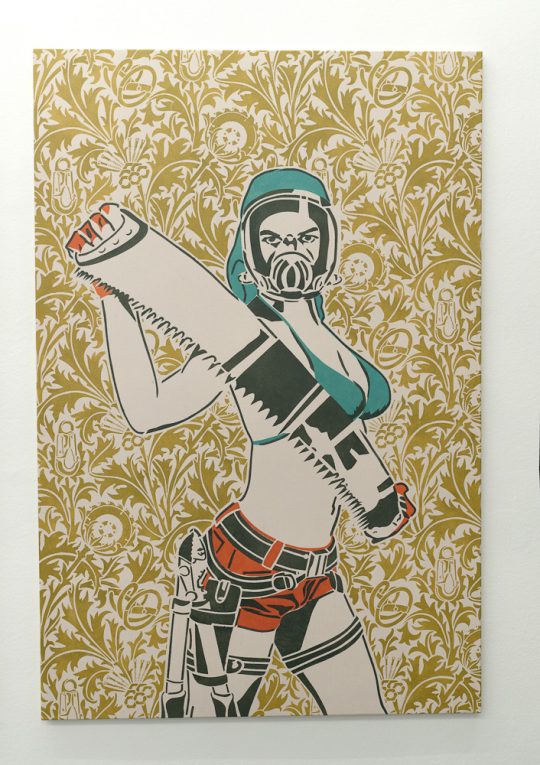
Arts & Crafts I, II, III (triptych), 2012
Stencil printing, acrylic on cotton nettle,
stretcher frame 100 x 150 cm
Background: Revision of a design by William Morris - Thistle 19th century
Unique edition 1/3
Photo: Dieter Düvelmeyer, courtesy Galerie Gilla Loercher
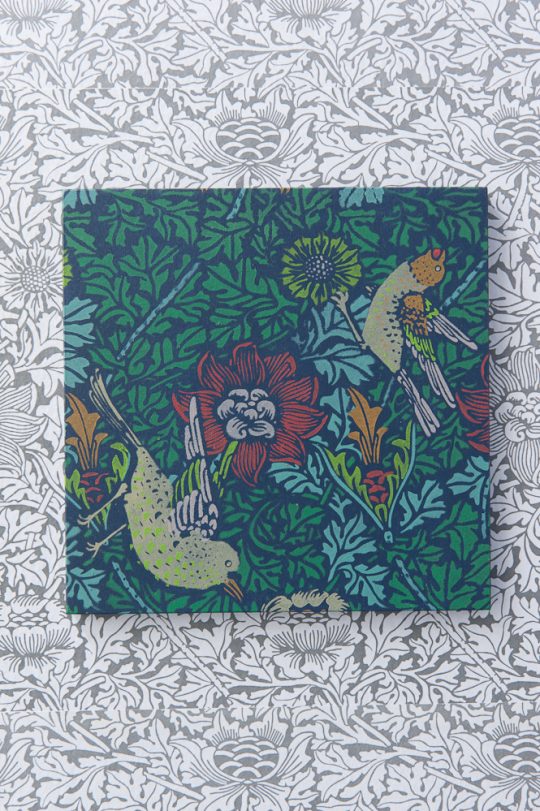
Spring awakening, installation, 2012
Stencil printing, acrylic on MDF
35 boards (each 20 x 20 cm)
Unique edition 1/3
Photo: Dieter Düvelmeyer, courtesy Galerie Gilla Loercher
Press Release
/The catalogue, „Arts and Morris“ accompanies the exhibition. With a text by art historian Wolfgang Siano. Edition: Galerie Gilla Lörcher, 2012
Wolfgang Siano about the exhibition “Arts and Morris” by Dana Widawaski: “In Dana Widawski’s paraphrases of Morris she shatters the homogenous surfaces by ironically placing the stencilled abstraction of the patterns, as well as the inserted prints, in relationship to one another by means of new implications of meaning, thus articulating them. The woman as fighting machine from the do-it-yourself store represents the type of emancipation that Adorno warned of when he wrote that the emancipation of women would lead to them being exhaustively trained as a branch of the military. Widawski, however, represents her with a self-confidant deeper meaning, which could just as well be applied to Morris’ affably naïve efforts on behalf of the emancipation of women from Victorian constraints. We are in all probability beyond this alternative, one which leaves us uneasy.
The wit that characterises Dana Widawski’s handling of William Morris’ ornamentation is just as much superficially as profoundly serious. The animation of the frozen animal world in the ornamentation injects movement into its staticness, its unsaid meaning ultimately aimed at a freedom or a moment of nature beyond art. This is most tangible in works such as in “Frühlingserwachen” [Spring Awakening], where – in analogy to computer games such as “Duck Shoot” – the joy in the movement of the birds, who have returned to the place of their aesthetic order, turns into horror at the automatism of mowing them down. The “Pre-Raphaelite” point of perspective, bound in the linearity of the surface design, has wandered out of the surface and returns as the potential of destruction of virtual space.” (Text: Art historian Wolfgang Siano. Translation Dr. David Sanchez)